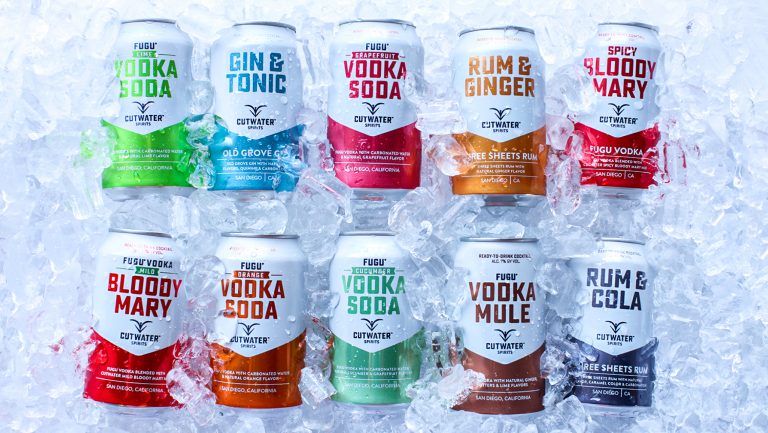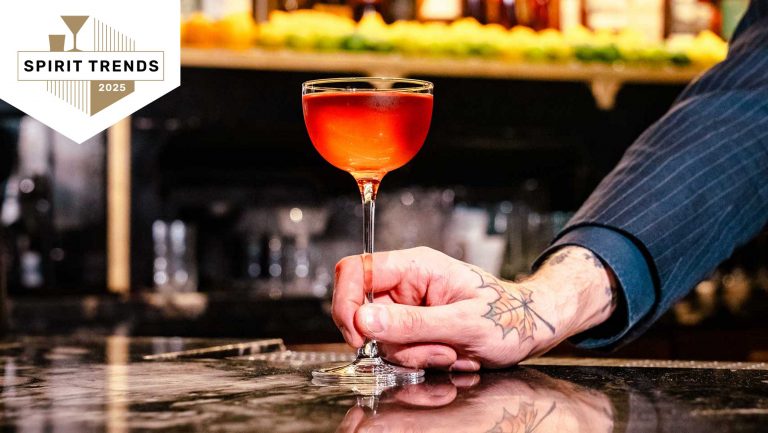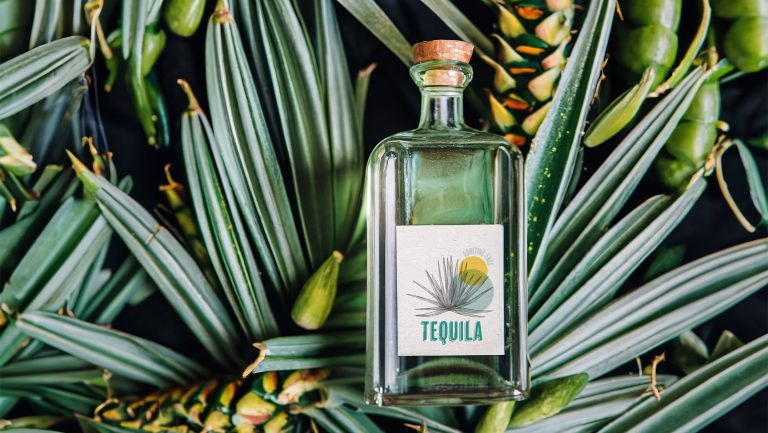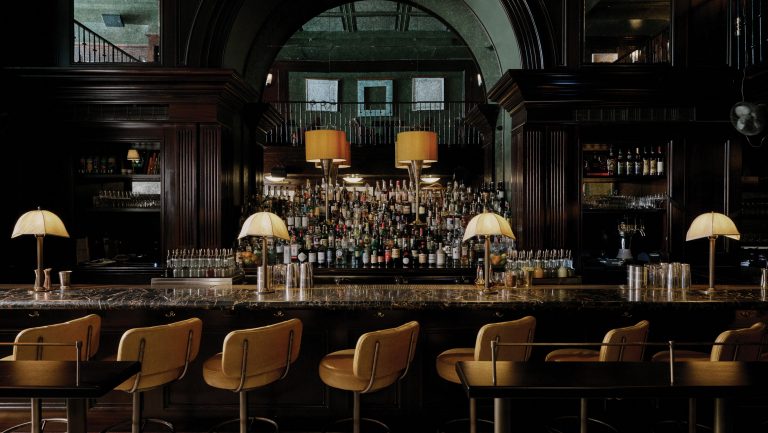Ask the average consumer today what his or her impression of ready-to-drink (RTD) cocktails is, and you’re likely to get a mixed response. Many of them will share their experiences as having been disappointing, and the phrase “sickly sweet,” or something similar, is often part of their description. It’s as if they really wanted to like the products but were let down by the actual liquid inside the can or bottle.
The explanation “They’re too sweet” was the third most common response (21 percent) from consumers who were asked in a recent survey by the global market research agency Mintel about why they don’t drink—or don’t drink more—RTD alcohol beverages. Also making the list were “They contain too many artificial ingredients” (13 percent) and “They’re low quality” (9 percent).
But times are changing, A new wave of RTD cocktail products is emerging and that’s revolutionizing this category—and helping it shed its reputation for low-quality concoctions.
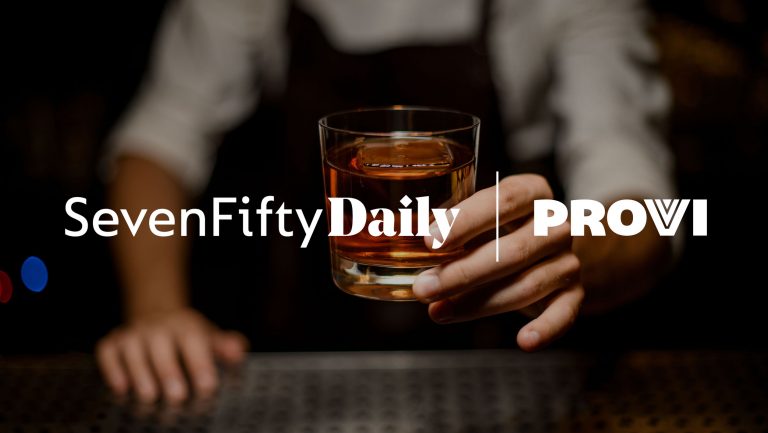
Don’t miss the latest drinks industry news and insights. Sign up for our award-winning newsletters and get insider intel, resources, and trends delivered to your inbox every week.
And the concept of RTD cocktails is so on trend today that their makers almost have to try hard not to succeed with consumers.
“You have a convenience trend happening, you have a lifestyle thing happening, and then you have this can phenomenon,” says Kevin Roberts, the executive vice president of supplier engagement for the alcohol distributor Breakthru Beverage Group, based in the U.S. and Canada. “You put those three together, and then you top it off with a consumer that’s blending and bleeding into other categories, and it’s a very exciting time for prepared cocktails. But they have to be unique; they have to be high quality. We’re definitely seeing the consumer move to more premium prepared cocktail solutions. It’s something that we’re investing in and that we’re really excited about.”
Roberts sees a big part of the new interest in RTD cocktails as being fueled by the interest in cocktails overall. “With the cocktail phenomenon happening in the on-premise, classic cocktails are very trendy,” he says. “That’s what’s in, so why not put a classic cocktail in a can, with natural ingredients, and tap into that?”
RTD cocktails also appeal to the busy lifestyle of many consumers, who recoil from the extra chore of having to buy all the ingredients to make a cocktail at home—especially when they’re entertaining a group of friends. The fact that RTD cocktails “don’t require preparation” was the top response from consumers (44 percent) who were asked in the Mintel survey why they choose an RTD cocktail over other types of alcohol beverages. The RTD cocktail is, after all, the perfect quick solution—just chill, open, and pour.
The convenience of RTD cocktails is also a hit with venues, from the biggest of stadiums to the smallest of restaurants, as well as with hotels and airlines. The new, high-quality RTD cocktails are proving to be a turnkey product that saves time and money. A small restaurant doesn’t have to hire a bartender to serve an excellent Bloody Mary with brunch. And a stadium can keep the concession line moving fast by pouring can after can of gin and tonics.
Speaking of those cans—they’ve also seen a resurgence in popularity in recent years, creating another “in” for RTD cocktails with consumers. Younger craft brew aficionados like their favorite craft beer from a can, so having their favorite cocktail from one is hardly a leap.
It helps, of course, that many of the new wave of RTD cocktails are light-years ahead of the category’s early adopters when it comes to quality. No matter how convenient a beverage is, after all, it’s going to have a tough time connecting with today’s consumers if it doesn’t deliver on taste and high-quality ingredients or have a ring of authenticity to it.
Cutwater Spirits’ line of 10 canned cocktails hits each of these notes. The San Diego–based company makes all its own products in its 50,000-square-foot production facility. What’s more, it has a deep background in the business—it’s an offshoot of the craft brewer Ballast Point Brewing, which was sold to Constellation Brands in 2015 for a whopping $1.3 billion.
“We’re a startup, but we’re well funded,” says Earl Kight, Cutwater’s chief sales and marketing officer, who explains that the company rebranded itself as Cutwater Spirits earlier this year. “So we [manage] all of our quality control, we control how all the spirits are made, we control how our mixers are made, we control how things are packaged.”
Citing evidence of the success of new RTD cocktail brands like his company’s, Kight says that although Cutwater planned to be available in only 10 states by the end of 2017, interest has been so strong that the products will instead be available in about 25 states by the end of the year.
Cutwater’s success follows the trajectory of the whole category these days, with sales of RTD cocktails showing a healthy uptick in the past year. Category sales rose by 5 percent, according to Nielsen data, for the 52 weeks through this past May, with about half of the category’s total sales volume in the grocery store channel.
A December 2016 report from Mintel, “RTD Alcoholic Beverages,” predicted that sales of RTD spirits-based cocktails in the U.S. would rise by 9 percent in volume by 2021. “A turnaround looks to be in the works,” the report states, and it specifically highlights “product innovation with a craft focus, which can imply quality,” along with “ingredient transparency,” as being among the trends that led Mintel to forecast strong growth.
The U.S. trails some other countries when it comes to the size of the RTD cocktails market, which possibly hints at how much potential for growth there is. Sales of RTD cocktails in the U.K., for instance, were about 2.6 times greater than in the U.S. in 2016, according to Euromonitor.
You can see how today’s RTD cocktails might differ from those of the past by the artisanal emphasis of the recent RTD cocktail startups. Cutwater, for example, focuses to a large degree on innovation. “We innovate like crazy,” says Kight. “We have a 200-seat restaurant and tasting bar connected to [our distillery], so it gives us a chance to do a lot of innovation and to test products out on consumers.”
Kight is also quick to point out that such innovation arises from the Cutwater crew’s own passion to try something new. “I think with our products, people don’t have any preconceived notions [about] what they’re supposed to taste like,” he says. “So when they pick up our Gin & Tonic, they’re like, ‘Wow! That’s got cucumber and grapefruit in the tonic.’ Because that’s what we like. That’s what we make in our bar.”
Similar artisanal leanings are shared by other new-wave RTD cocktail companies. In September, the Sazerac Company introduced Handy & Schiller Barreled Cocktails, named for two of the men who influenced the rich cocktail culture in New Orleans, Thomas Handy and John Schiller. The brand offers two bottled RTD cocktails in the New Orleans market—the Barreled Old Fashioned and the Barreled Manhattan—and plans to expand its distribution in 2018.
“Our quality whiskey brands and passion to create unique experiences for at-home consumers drove our strategy behind Handy & Schiller,” says Jana Ritter, the marketing manager for the brand. “Both the Manhattan and the Old Fashioned are made with award-winning whiskeys from Buffalo Trace Distillery. Each was also barrel-aged at the distillery under the watchful eye of Master Distiller Harlen Wheatley.”
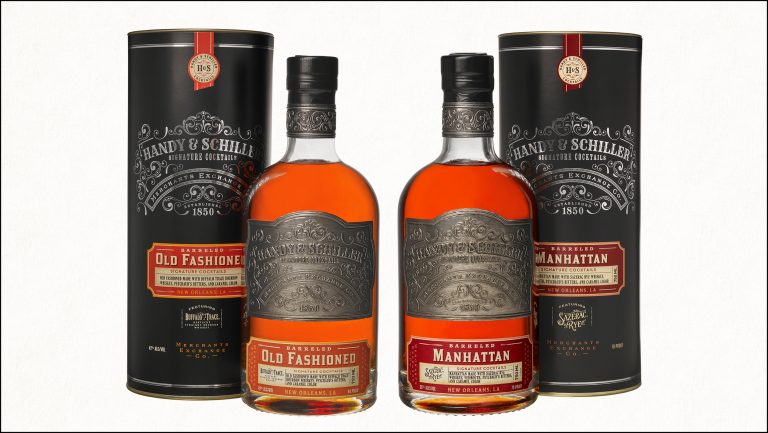
Ritter explains that Sazerac recognized that consumers who enjoy a classic cocktail in bars or restaurants are often eager to replicate the experience at home. “However,” she says, “many are intimidated by the list of ingredients necessary and the process of making [the cocktails].”
Both Handy & Schiller cocktails are sold in 750-milliliter bottles for a suggested retail price of $39.99, while Cutwater’s canned products are priced around $14.99 for a four-pack, or around $3.99 for a single can.
Another company offering canned RTD cocktails is the one-year-old Can Can Cocktails, based in Sacramento, California. The new company’s founder, Ryan Seng, had been working as a bartender when he decided to can his cocktails. Says Seng, “I was wondering why there wasn’t a high-quality cocktail available in a can.”
Seng firmly describes Can Can as a cocktail company. “We’re not a spirits company pushing our spirits in cans,” he says. “We’re making unique cocktails that have some legs. I’m not just making drinks that everybody knows. I want to produce something that looks exciting, something new, something that they wouldn’t know how to make at home.”
Similarly, Crafthouse Cocktails in Chicago stresses the expertise of its award-winning chief mixologist, Charles Joly. Joly started Crafthouse with his partner, Matt Lindner, in 2013. “We were running a cocktail lounge called The Drawing Room,” says Lindner, “and we just kind of saw the need and understood that people were having a hard time replicating a well-balanced craft cocktail at their house.”
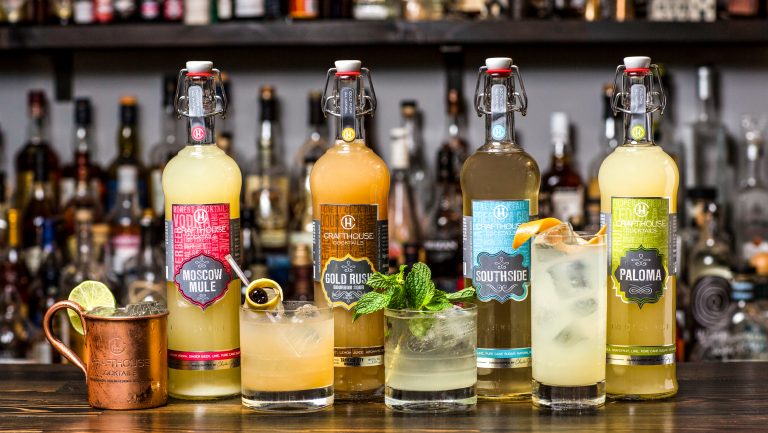
Lindner says one of the biggest hurdles for the brand has been overcoming the reputation of many of the legacy RTD cocktail brands and convincing distributors, retailers, and consumers to give the category another shot.
“The first three years for us was quite a struggle to educate people that you could actually have a well-crafted cocktail in a bottle,” Lindner says. “It didn’t have to be super-sugary or full of artificial flavors or whatnot. So we’ve spent the entirety of our existence out there trying to educate people that this is a real alternative to beer and wine. It’s not an also-ran kind of thing.
“And just in the last year,” he continues, “we’ve seen quite a bit of competition come into the field. But more than that, we’ve definitely recognized the acceptance of the category both for consumers at a retail level and also for on-premise.”
United Airlines, for instance, now carries Crafthouse. “They were the first ones to take a chance on such a concept as a bottled cocktail,” Lindner says. “And now we’re starting to see hotel in-rooms, concert venues, and sports arenas that see that there’s definitely a demand but there’s not the ability to execute.
“But there’s always been a resistance just because they assumed it was going to be terrible,” he says. “And now that people are discovering that it’s not—not just our brand but the category in general—there’s some quality products out there, and it makes a lot of sense for a lot of different people.”
And, says Roberts, of Breakthru Beverage Group, the sky may be the limit for this new breed of RTD cocktails. “Based on the consumer—the millennial wanting unique and fresh . . . they want it now . . . this can phenomenon,” he says, “I don’t see a lot of downside on where the trend is going.”

Dispatch
Sign up for our award-winning newsletter
Don’t miss the latest drinks industry news and insights—delivered to your inbox every week.
Andrew Kaplan is a freelance writer based in New York City. He was managing editor of Beverage World magazine for 14 years and has worked for a variety of other food and beverage-related publications, and also newspapers. Follow him on Twitter at @andrewkap.

